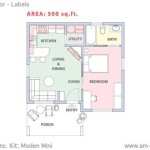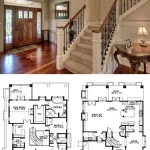Colonial House Plans 3000 Square Feet With Garage Design
Colonial house plans represent a timeless architectural style known for their symmetrical facades, classic detailing, and functional layouts. When coupled with a spacious 3000 square foot footprint and the added convenience of a garage, these designs offer a blend of traditional charm and modern living. This article explores the key features, considerations, and variations associated with colonial house plans of this size, focusing on the integration of a garage into the overall design.
Understanding the defining characteristics of colonial architecture is crucial before delving into specific plans. Colonial homes typically feature a rectangular or square footprint, a centered front entrance, evenly spaced windows, and a pitched roof. The style emphasizes balance and proportion, creating a visually appealing and structurally sound dwelling. This aesthetic, adapted from European precedents, evolved to suit the climate and available materials of the American colonies, resulting in regional variations that contribute to the style's enduring appeal. The inclusion of a garage represents a contemporary adaptation, often requiring careful planning to maintain the integrity of the original design principles.
A 3000 square foot colonial house plan provides ample space for a growing family or those who appreciate room to spread out. This square footage allows for multiple bedrooms and bathrooms, a formal living room and dining room, a well-equipped kitchen, and potential additions like a home office, library, or recreation area. The integration of a garage, whether attached or detached, further enhances the functionality and value of the home.
Planning Considerations for 3000 Square Foot Colonial House Plans
Designing a 3000 square foot colonial house plan with a garage necessitates careful consideration of several key factors. These factors impact both the aesthetic appeal of the home and its practical functionality. Proper planning ensures that the final design aligns with the homeowner's needs and preferences while respecting the traditional architectural style.
One of the primary considerations is the overall layout of the house. A traditional colonial layout typically features a central hallway flanked by formal living spaces on one side and a dining room or kitchen on the other. The upper level usually houses the bedrooms and bathrooms. When incorporating a garage, it is crucial to consider its placement and accessibility. An attached garage can conveniently connect to the kitchen or mudroom, providing easy access to the house from parked vehicles. However, careful attention must be paid to the garage's visual impact on the front facade, as it can potentially detract from the symmetrical appearance of the colonial style.
Another vital aspect is the interior flow and functionality. With 3000 square feet of space, it is possible to create distinct zones for different activities. A formal living room can serve as a space for entertaining guests, while a more casual family room can be designated for relaxation and recreation. The kitchen should be designed with ample counter space and storage, and the bedrooms should offer privacy and comfort. The garage should be adequately sized to accommodate vehicles and potentially provide additional storage space for tools, equipment, or recreational items.
Exterior design elements also play a significant role in the overall aesthetic. Maintaining the symmetrical facade and proportioned windows is essential for preserving the colonial style. The garage door should be carefully selected to complement the house's design, and landscaping can be used to soften the visual impact of the garage and integrate it seamlessly into the overall landscape. Choosing appropriate exterior materials, such as clapboard siding, brick, or stone, can further enhance the colonial character of the home.
Garage Integration Options and Design Styles
Integrating a garage into a colonial house plan requires exploring various design options to determine the best fit for the homeowner's needs and the architectural integrity of the style. There are several ways to incorporate a garage, each with its own advantages and disadvantages.
An attached garage is perhaps the most common option, offering convenience and protection from the elements. Attached garages can be designed as either front-entry or side-entry, depending on the lot size and the desired aesthetic. A front-entry garage, while convenient, can sometimes disrupt the symmetrical facade of a colonial home. Careful landscaping and design elements can help to minimize this impact. A side-entry garage, on the other hand, can be less visually prominent, allowing for a more traditional facade. However, side-entry garages may require a wider lot and careful planning to ensure easy access.
A detached garage is another viable option, particularly for homeowners who prioritize preserving the traditional appearance of their colonial home. Detached garages can be located to the side or rear of the house, minimizing their visual impact on the front facade. This option also allows for greater flexibility in terms of garage size and design, as it is not directly integrated into the main house structure. Detached garages can be connected to the house via a covered walkway or a breezeway, providing protection from the elements while maintaining a distinct separation between the house and the garage.
Carriage house style garages are a popular choice for colonial homes, offering a blend of traditional aesthetics and modern functionality. These garages often feature barn-style doors and decorative hardware, complementing the colonial style. Carriage house style garages can be either attached or detached, and they can be designed to house multiple vehicles or provide additional storage space.
The choice of garage door material and design is also crucial. Wooden garage doors can enhance the traditional look of a colonial home, but they require regular maintenance to prevent warping and rot. Steel or aluminum garage doors can be more durable and low-maintenance, but they may not have the same aesthetic appeal as wood. Selecting a garage door style that complements the house's architecture is essential for creating a cohesive and visually appealing design.
Interior Layout and Room Functionality in Colonial House Plans
The interior layout of a 3000 square foot colonial house plan provides ample opportunities for creating functional and comfortable living spaces. With careful planning, it is possible to design a home that meets the needs of a modern family while respecting the traditional character of the colonial style.
A typical colonial layout features a central hallway that serves as the main artery of the house. This hallway often connects the front entrance to the rear of the house, providing access to the various living spaces. The living room and dining room are typically located on either side of the hallway, creating formal areas for entertaining guests. The kitchen is often situated at the rear of the house, providing easy access to the backyard or patio. The upper level typically houses the bedrooms and bathrooms, offering privacy and separation from the main living areas.
In a 3000 square foot home, there is ample space to create distinct zones for different activities. A formal living room can be used for special occasions, while a more casual family room can be designated for everyday relaxation. The kitchen can be designed with a large island or breakfast bar, providing ample counter space and seating. A separate dining room can be used for formal meals, while a breakfast nook can be incorporated into the kitchen for casual dining.
The bedrooms should offer privacy and comfort, with ample closet space and ensuite bathrooms. A master suite can include a large bedroom, a walk-in closet, and a luxurious bathroom with a soaking tub and separate shower. Additional bedrooms can be used for children, guests, or home offices. A laundry room should be conveniently located near the bedrooms, making it easy to manage household chores.
The integration of the garage should also be carefully considered in the interior layout. An attached garage can be connected to the kitchen or mudroom, providing easy access to the house from parked vehicles. A mudroom can serve as a transition space between the garage and the house, providing a place to store coats, shoes, and other outdoor gear. This can help to keep the interior of the house clean and organized. The garage itself should be adequately sized to accommodate vehicles and provide additional storage space for tools, equipment, or recreational items.
Ultimately, the interior layout of a 3000 square foot colonial house plan should be tailored to the specific needs and preferences of the homeowner. By carefully considering the available space and the desired functions of each room, it is possible to create a home that is both beautiful and functional.

Colonial Style House Plan 4 Beds 3 5 Baths 3000 Sq Ft 329 128

Modern Colonial Masterpiece 3000 Sq Ft House Plan 963 00965

Spanish Colonial 8303 4 Bedrooms And 3 5 Baths The House Designers

Colonial House Plans The Designers Floor Plan Designs

3000 Sq Ft House Plans Floor For Homes

House Plan 78853 Colonial Style With 3000 Sq Ft 3 Bed Bath

Custom 2 Story Houses New Two Home Plans Housing Development D

Colonial Style House Plans Southern Floor

Walkout Basement Colonial Style House Plan 6953 Madison

Custom 2 Story Houses New Two Home Plans Housing Development D








